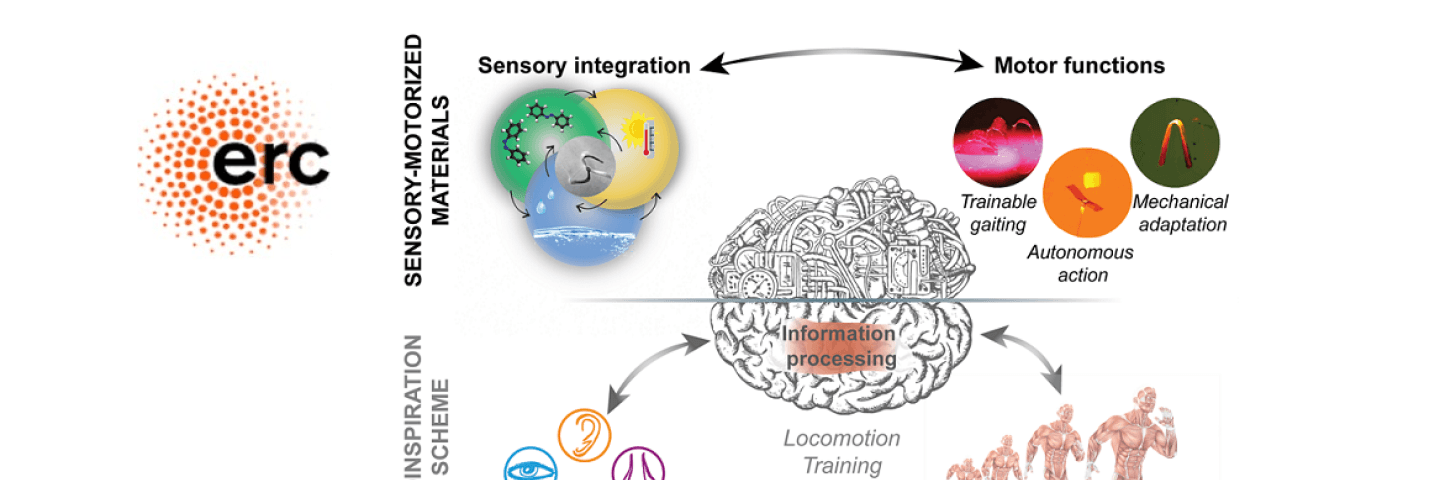MULTIMODAL will develop sensory-motorized material systems that perceive several coupled environmental stimuli and respond to a combination of these via controlled motor functions, shape-change or locomotion. The sensory-motorized materials will be “trained” to strengthen upon repetitive action, they can “heal” upon injury, and mechanically adapt to different environments. They will be utilized in the design of soft robots with autonomous and interactive functions.
Background
The movements and shape transformations of biological species are based on sensory stimulation and information processing, which is controlled by continuous interactions of the sensory and motor systems. The received sensory signals are inherently connected and in continuous feedback with the motor functions. The
sensory motor interaction is intrinsic to learning and development, and it allows for living organisms to adapt to the surrounding environment. The biological motor functions can be trained through repetition to gain advanced skills such as, e.g., gripping or locomotion. Inspired by this biological context, we will take shape-changing materials beyond state-of-the-art by utilizing multi-responsivity as well as supramolecular and dynamic covalent chemistry. MULTIMODAL materials will combine the following features:
(i) They undergo remotely controlled fast shape changes in response to multiple interconnected stimuli
and spontaneously adapt to different environments.
(ii) They can repair themselves and restore their motion trajectories after damage.
(iii) Their mechanical response can be trained upon repetitive stimulation.
Goal
Each of the above-mentioned features has been studied separately in the context of soft responsive material systems. However, there are no systems that would combine these features. The development of such materials is a grand challenge, and the overarching goal of the MULTIMODAL project.
Impact
The potential impact of this new perspective is twofold. First, MULTIMODAL seeks to connect the communities of molecular switches/dissipative self-assemblies and bioinspired soft robotic devices. These domains study life-like materials from different premises and increasing the dialogue between them is pertinent for scientific progress. Our niche lies at the interface between these domains, hence facilitating this dialogue. Second, the grand challenges in the field of soft robotics include developing new multifunctional, autonomous, compliant robotic materials, and translating fundamental biological concepts into design rules in robotics. By addressing shape-changing materials with embodied “intelligence”, adaptation to different environments, and autonomous action, MULTIMODAL addresses these contemporary key challenges, thereby contributing towards their wider deployment in real-world applications. This fundamentally scientific project also offers far-reaching and unprecedented long-term prospects. For example, MULTIMODAL may potentially provide guidelines for, e.g., mechanically adaptable inks for 4D printing, novel concepts for drug delivery and release, or construction of shape-changing materials solely from dynamic and supramolecular bonds, thereby making them to spontaneously degrade at the end of their life cycle.
Funding
Coordinating organisation
Tampere University



